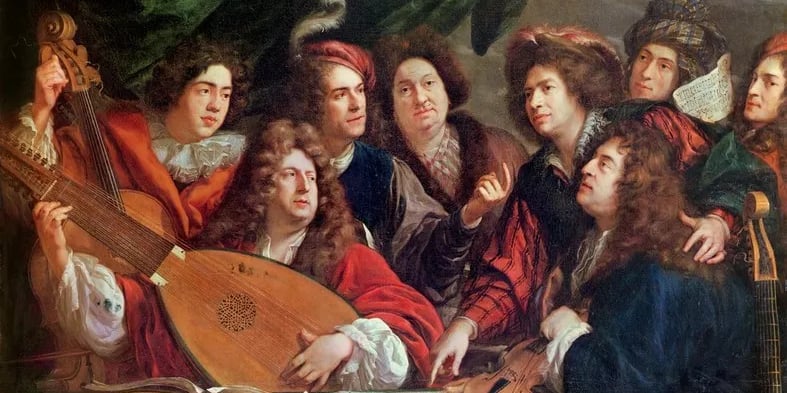Part 5 - Role of Instrumental Music In Renaissance Society
During the Renaissance, instrumental music began to move beyond its supportive role and develop a voice of its own. While vocal music remained dominant in religious and courtly traditions, the 15th and 16th centuries witnessed a remarkable transformation: instruments became tools for artistic expression, education, social celebration, and innovation. This shift laid the groundwork for many of the instrumental genres that would flourish in the centuries to come.
🎼 From Support to Spotlight
In the early Renaissance, instruments primarily doubled or replaced vocal lines. Over time, however, composers and performers began exploring purely instrumental forms like dances, ricercars, canzonas, and fantasias. These pieces allowed musicians to experiment with texture, structure, and virtuosity - free from the constraints of words. This artistic freedom marked the beginning of instrumental music’s independent identity.
🎭 Music in Court Life and Celebrations
Instrumental music was central to both public festivities and elite court life. At noble banquets, weddings, and town fairs, ensembles performed popular dances such as the pavane, galliard, and saltarello. These dances were not just entertainment - they were a key part of social rituals. Nobles often hired skilled musicians to impress guests and signal cultural sophistication. A court with a strong musical ensemble projected power and refinement. Performances were staged to welcome dignitaries, celebrate military victories, or accompany plays and masques. The presence of professional instrumentalists became a symbol of prestige.
👯 Dance and Everyday Culture
Dancing wasn’t limited to the upper class. From town squares to village festivals, people of all ranks enjoyed music-driven dances. Musicians adapted melodies to suit different rhythms and spaces, often improvising to keep the energy high. Even young nobles were expected to master basic dance forms and learn an instrument as part of their education - a reflection of Renaissance ideals linking music with discipline and elegance.
🧑🎓 Music as a Marker of Education
Playing an instrument, especially the lute or keyboard, became a sign of intelligence and good upbringing. In elite households, music was integrated into the humanist curriculum, alongside grammar, rhetoric, and philosophy. A well-rounded Renaissance education viewed musical literacy as essential to personal refinement and intellectual growth.
🎺 The Rise of Instrument Families
The Renaissance introduced the idea of instrumental consorts - groups of instruments from the same family (like viols or recorders) or mixed ensembles. Composers began writing music specifically for these groupings, exploring rich textures and tonal contrasts. Instruments such as the shawm, crumhorn, sackbut, lute, and early keyboards like the virginal and harpsichord expanded the sound palette of the time.
🔧 Craftsmanship and Innovation
As the demand for instrumental music increased, so did the sophistication of instrument building. Cities like Cremona, Venice, and Nuremberg became renowned centres of instrument craftsmanship. Luthiers and builders experimented with materials, tuning systems, and acoustics - contributing to both artistic development and local economies.
💡 A Playground for Experimentation
Instrumental music gave composers freedom to push boundaries. Without text to guide meaning, they used counterpoint, imitation, and spatial arrangement to create expressive, dynamic works. For example, Giovanni Gabrieli composed polychoral pieces that used separated groups of instruments to fill the vast interiors of Venetian cathedrals with sound, creating an early form of surround-sound music.
⚖️ Sacred and Secular Balance
Instrumental music served both the sacred and the secular, often in the same event. In churches, organs, viols, and sackbuts supported congregational singing and liturgical drama. In secular settings, the same instruments appeared at dances, feasts, and theatrical performances. This dual use reflected the Renaissance spirit - a balance between devotion and delight, the sacred and the celebratory.
📜 A Legacy That Endures
Though instrumental music lacked the text-driven narratives of vocal works, it developed its own expressive language - capable of conveying mood, motion, and character. This period laid the foundation for the instrumental genres of the Baroque era, including the sonata, suite, and concerto, where instruments would finally claim centre stage.
🔖 Summary
Instrumental music in the Renaissance was more than accompaniment - it was a cultural force. It reflected a society in transition: valuing art, intellect, elegance, and innovation. Whether celebrating victories, educating youth, or enhancing worship, instruments became the voices of a changing world - resonating across courts, churches, and city squares alike.

